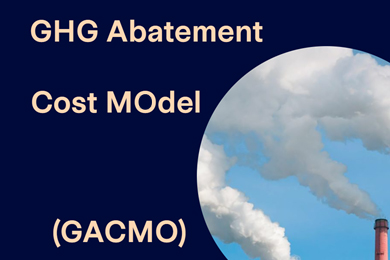NDC assessment, implementation and tracking can be a daunting task. However, a number of guides and tools are available to help countries navigate the challenges. One of these is the Greenhouse Gas Abatement Cost Model (GACMO), an excel-based tool developed by UNEP-Copenhagen Climate Centre, and updated for ICAT.
GACMO allows countries to carry out rapid, comprehensive evaluations of the GHG impacts of a variety of mitigation options. It calculates GHG reductions resulting from specific mitigation actions, allowing for the effect of mitigation actions to be compared to a business as usual scenario.
GACMO can be used to estimate expected and achieved GHG reductions of policies and measures. Thus, it can be used for NDC tracking purposes, and in the preparation of biennial transparency reports, the main reporting vehicle under the Paris Agreement.
One of the many compelling features of GACMO is that countries need very little data for their initial calculations, as GACMO includes a series of default values, that are already pre-loaded in the tool and that the user does not have to update unless the user has better inputs and wants to make more precise estimates. When more country-specific data becomes available, it can be inputted to the platform and values will automatically adjust.
After more than 20 years of research at UNEP Copenhagen Climate Centre, GACMO now contains 40 sheets covering sectors such as agriculture, biomass energy, energy efficiency in households, forestry, and solar and wind energy. It has been successfully used in multiple countries across the globe. In this article, we provide examples from two countries, Viet Nam and Sri Lanka, both of which were supported by ICAT’s implementing partner, UNEP-Copenhagen Climate Centre.
The tool is available at : https://climateactiontransparency.org/our-work/icat-toolbox/gacmo/

